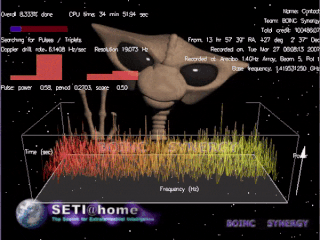
SETI@home is a project of the Berkeley SETI Research Center to analyze radio signals, searching for signs of extraterrestrial intelligence. Until March 2020, it was run as an Internet-based public volunteer computing project that employed the BOINC software platform. It is hosted by the Space Sciences Laboratory at the University of California, Berkeley, and is one of many activities undertaken as part of the worldwide SETI effort.

The Berkeley Open Infrastructure for Network Computing is an open-source middleware system for volunteer computing. Developed originally to support SETI@home, it became the platform for many other applications in areas as diverse as medicine, molecular biology, mathematics, linguistics, climatology, environmental science, and astrophysics, among others. The purpose of BOINC is to enable researchers to utilize processing resources of personal computers and other devices around the world.

LHC@home is a volunteer computing project researching particle physics that uses the Berkeley Open Infrastructure for Network Computing (BOINC) platform. The project's computing power is utilized by physicists at CERN in support of the Large Hadron Collider and other experimental particle accelerators.
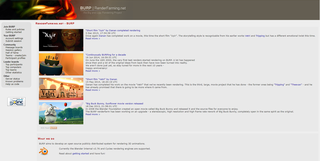
Big and Ugly Rendering Project (BURP) is a non-commercial Volunteer computing project using the BOINC framework for the rendering of 3D graphics that has been in hibernation as of 2020. The project website currently shows the status as "extended maintenance" until 2027.

Within the BOINC platform for volunteer computing, the BOINC Credit System helps volunteers keep track of how much CPU time they have donated to various projects. This ensures users are returning accurate results for both scientific and statistical reasons.
Orbit@home was a BOINC-based volunteer computing project of the Planetary Science Institute. It uses the "Orbit Reconstruction, Simulation and Analysis" framework to optimize the search strategies that are used to find near-Earth objects.
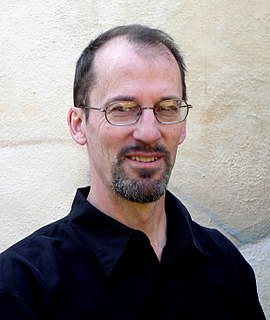
David Pope Anderson is an American research scientist at the Space Sciences Laboratory, at the University of California, Berkeley, and an adjunct professor of computer science at the University of Houston. Anderson leads the SETI@home, BOINC, Bossa and Bolt software projects.
SZTAKI Desktop Grid (SzDG) was a BOINC project located in Hungary run by the Computer and Automation Research Institute (SZTAKI) of the Hungarian Academy of Sciences. It closed on June 21, 2018.
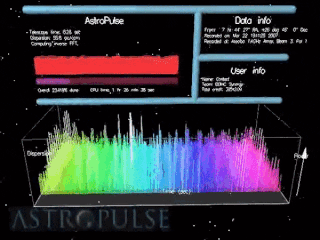
Astropulse is a volunteer computing project to search for primordial black holes, pulsars, and extraterrestrial intelligence (ETI). Volunteer resources are harnessed through Berkeley Open Infrastructure for Network Computing (BOINC) platform. In 1999, the Space Sciences Laboratory launched SETI@home, which would rely on massively parallel computation on desktop computers scattered around the world. SETI@home utilizes recorded data from the Arecibo radio telescope and searches for narrow-bandwidth radio signals from space, signifying the presence of extraterrestrial technology. It was soon recognized that this same data might be scoured for other signals of value to the astronomy and physics community.

QMC@Home was a volunteer computing project for the BOINC client aimed at further developing and testing Quantum Monte Carlo (QMC) for use in quantum chemistry. It is hosted by the University of Münster with participation by the Cavendish Laboratory. QMC@Home allows volunteers from around the world to donate idle computer cycles to help calculate molecular geometry using Diffusion Monte Carlo.
SERENDIP is a Search for Extra-Terrestrial Intelligence (SETI) program originated by the Berkeley SETI Research Center at the University of California, Berkeley.
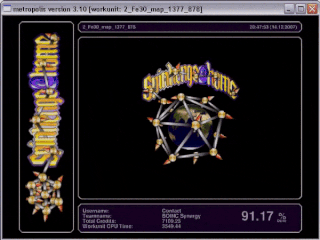
Spinhenge@home was a volunteer computing project on the BOINC platform, which performs extensive numerical simulations concerning the physical characteristics of magnetic molecules. It is a project of the Bielefeld University of Applied Sciences, Department of Electrical Engineering and Computer Science, in cooperation with the University of Osnabrück and Ames Laboratory.

BOINC client–server technology refers to the model under which BOINC works. The BOINC framework consists of two layers which operate under the client–server architecture. Once the BOINC software is installed in a machine, the server starts sending tasks to the client. The operations are performed client-side and the results are uploaded to the server-side.
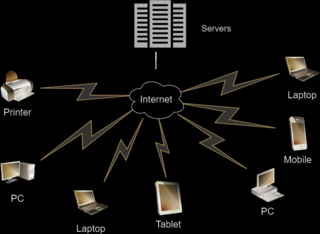
Volunteer computing is a type of distributed computing in which people donate their computers' unused resources to a research-oriented project, and sometimes in exchange for credit points. The fundamental idea behind it is that a modern desktop computer is sufficiently powerful to perform billions of operations a second, but for most users only between 10-15% of its capacity is used. Typical uses like basic word processing or web browsing leave the computer mostly idle.

Cosmology@Home is a volunteer computing project that uses the BOINC platform and was once run at the Departments of Astronomy and Physics at the University of Illinois at Urbana-Champaign. The project has moved to the Institut Lagrange de Paris and the Institut d'Astrophysique de Paris, both of which are located in the Pierre and Marie Curie University.
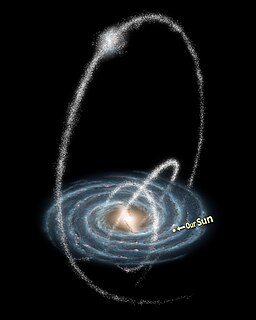
MilkyWay@home is a volunteer computing project in astrophysics running on the Berkeley Open Infrastructure for Network Computing (BOINC) platform. Using spare computing power from over 38,000 computers run by over 27,000 active volunteers as of November 2011, the MilkyWay@home project aims to generate accurate three-dimensional dynamic models of stellar streams in the immediate vicinity of the Milky Way. With SETI@home and Einstein@home, it is the third computing project of this type that has the investigation of phenomena in interstellar space as its primary purpose. Its secondary objective is to develop and optimize algorithms for volunteer computing.
GridRepublic is a BOINC Account Manager. It focuses on creating a clean and simple way to join and interact with BOINC. GridRepublic was started with a mission to raise public awareness and participation in volunteer computing with BOINC. GridRepublic was formed in 2004 by Matthew Blumberg as a mechanism to control the multiple projects from one place. The code for the BOINC software had to be redesigned to allow for the Account Manager system to be implemented.

The Berkeley SETI Research Center (BSRC) conducts experiments searching for optical and electromagnetic transmissions from intelligent extraterrestrial civilizations. The center is based at the University of California, Berkeley.

The NIROSETI is an astronomical program to search for artificial signals in the optical (visible) and near infrared (NIR) wavebands of the electromagnetic spectrum. It is the first dedicated near-infrared SETI experiment. The instrument was created by a collaboration of scientists from the University of California, San Diego, Berkeley SETI Research Center at the University of California, Berkeley, University of Toronto, and the SETI Institute. It uses the Anna Nickel 1-m telescope at the Lick Observatory, situated on the summit of Mount Hamilton, east of San Jose, California, USA. The instrument was commissioned on 15 March 2015 and has been operated for more than 150 nights, and is still operational today.
















